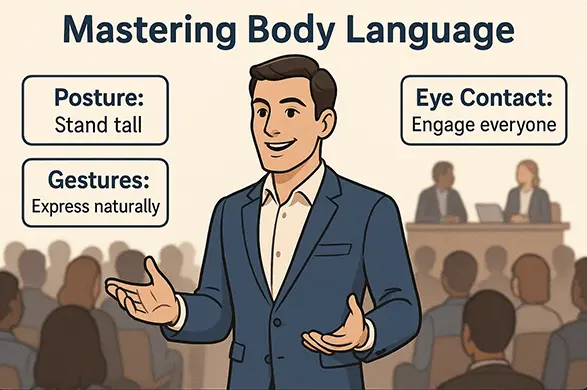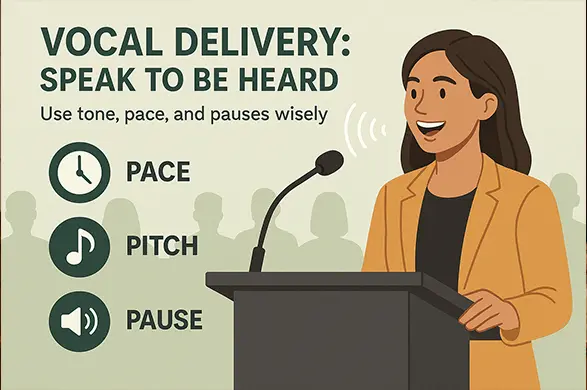How to Write a Play: Step-by-Step Guide 2025
Learn how to write a play with our 2025 step-by-step guide for students. Master playwriting structure, dialogue, and tips for academic success.
The start of the debate decides how impactful your debate, ideas, and facts will be in the rest of the argument. The audience has a sense of observation, and when you commence, it is not just the words, but the posture, style, presentation of the topic, and your expressions that reflect how confident you are about the topic and ideas you represent. This triggers the interest of the audience, and they find themselves curious to know what more information you gather in your pockets, and how impressive it would be to witness the argument between two strong individuals. Learning how to start a debate will definitely be helpful, as you will learn the importance of an impactful debate beginning. However, there is no doubt that the first minute of your debate speech can win or lose your audience. But the question is how this powerful impact can be created on the audience?
The introductory speech does not occur as a ritual; it is a high-stakes, dramatic moment, where you, the main character, are forced to take charge of the story. Any opening is a fumbling; any brilliance is the assault that destroys the enemy before the cross-examination has started. It is necessary to create a sense of immediate authority and clarity and turn passive listeners into active believers who see the whole issue through your vision. I am here to make you learn to set that anxious expectation in motion and make it a peroration that cannot be stopped.
The initial address is the blueprint of the whole performance of your team. To learn how to start a debate speech or how to debate efficiently and make it really strong, you should be a master of three fundamental purposes. Consider such objectives to be not only on a checklist, but as a strategic move that gains an early, psychological advantage:
This is the time to shatter the glass and put some life into the room by knowing how to start a debate introduction. An excellent introduction is not one that begins with dry formalities but one that starts with an emotional or intellectual point that aims at making the judge and the audience lean forward.
Debates are won or lost depending on the interpretation of the topic and your understanding of how to start a debate speech. What impact will be created if you fail to represent the topic well? To listen to you further, make the audience actively comprehend the central idea of the argument from your side. The second, critical objective on your part is to take control of the interpretation of the resolution of the debate.
The last thing in the process of how to start a debate is to have a clear and easy-to-follow map of where you are going and what you will offer. There must be a straight map of your thoughts, facts, and ideas you are going to share about the topic. Because when the counterarguments arrive, you must have clarity about what you gathered so it can be challenged with no confusion:
At the time of preparing for the debate, the most essential thing is to be adequately informed about the process. Each step is highly essential to form an impression at the beginning of your debate, whether it is the attention getter, facts and evidence, debate greeting, or addressing the key terms. Let’s discuss how each step is important and how it can be fulfilled:
The initial fifteen seconds of your speech are the best time to endear yourself to the attention of the room and create a strong emotional appeal to your subject. An effective attention getter hook the audience and makes them ready to believe in what you have to say.
| Technique | Purpose | Example |
| Rhetorical Question | Forces immediate mental engagement with the topic. | "If we continue down this path, will the future we create be a utopia, or a cage?" |
| Surprising Statistic | Provides instant authority and shocks the audience into listening. | "Every sixty seconds, another community group loses its funding—a death knell for local engagement." |
| Short Story/Anecdote | Humanizes the issue and creates an emotional anchor. | "Picture Sarah, a dedicated teacher who..." (Briefly link her struggle to the motion.) |
| Powerful Quote | Borrowing gravitas from a respected source to reinforce your theme. | "As one philosopher noted, 'The price of anything is the amount of life you exchange for it.' We believe the cost of this policy is simply too high." |
The correct greeting cannot be compromised in how to start a debate learning; it is an indication of respect towards the judges and opponents, as well as the formal environment of the argument. It provides your professional attitude, prior to any content being presented, ,whether it is Lincoln-Douglas or Parliamentary Debates:
Clarity is paramount. Your audience, and your judges, ought to be perfectly aware what it is you are talking about, and on whose side you appear. This makes the listener pay attention as it will catch their attention to what you are saying.
This is a gambit of a power game to answer the how to start a debate introduction. By establishing the main terms of the debate, you determine the extent and boundaries of the whole discussion and make sure that all people are debating the same issue, preferably even on the field you picked.
The roadmap your arguments will serve as your guarantee to the judge, as it is your organizational tool that will help him or her to take notes and keep them in mind. This is then to be given concisely but clearly after your definitions.
Thesis or team line is a summary of your complete case in a short and memorable sentence. It is what you really want the judge to take with them through the debate, so make sure you state your thesis clearly.
Nothing can be better understood than the anatomy of a powerful opening statement debate examples. These are different formats and positions in which the basic aims of the hook, the definition, and the roadmap are progressed to fit the various types of debates and strategic requirements. Go through these examples so you will be adequately informed on how you must prepare to start the debate that will hook the audience:
In this opening speech, there is the burden of framing the whole debate. Below, you will be taken through the exact language and debate structure of the Opening Government to establish control, define the model, and the two main arguments, including margin notes that indicate the purpose and the strategy behind each and every word spoken.
The main work of the negative team is to disrupt, as opposed to the affirmative one. In this script, we can see the steps of moving quickly to the acceptance of the thesis of the opponent, to targeting their definitions, to pointing out the glaring weaknesses in their plan, the inherency and solvency, and establishing the strong point of the negative case; the disadvantages.
When discussing the concept of morality, philosophy, and values, it is paramount to create an ethical prism through which the decision must be evaluated. This script does not emphasize policy but rather defines a core value, such as Justice or Liberty, and a criterion by which the value is realized, which gives one the moral basis to succeed in an argument of principles.
Get Examples for all these categories from here: Debate Speech Examples (Annotated)
The transition between theory and practice needs real-life opening statement debate examples. These templates offer fill-in-the-blank frameworks that you can instantly modify to suit different forms of debates so that you can be sure that you have covered all the strategic points that you need to cover, including the hook, definitions, and the roadmap, in a quick and assertive manner.
This template is designed to be easy and introductory debates that are typical in academia. It is obsessed with unambiguous clarity and simplicity, so that the first speaker debate characterizes the motion and presents a simple, uncomplicated two or three-point case, not the sophisticated sophistication of high-level competitive circuits.
This script starter is very strategic and designed in formats such as Policy or Parliamentary debate. It guarantees that the first speaker takes the reins of the framing, and that he introduces the detailed definitions, gives a clear and solid model or plan at once, and then proceeds to explain the sophisticated arguments that the team will apply to demonstrate the resolution right.
The Negative team has to be disruptive and active. This template is devoted to the critical task of confronting the debate structure of the opposition at the very beginning. It gives expressions to recognize and reject the definitions of the affirmative, instantly switch to a different expression, and present the key drawbacks that will be the fundamental justifications behind turning down the motion.
Get the template for all these categories from here: Templates and Script Starters
When you are preparing for the debate, make sure you do not miss certain points. It is not just about the factual information and how enlightened you are about the topic, but it is also about how you present it. How confident you are and whether you will be able to convince the judges and the audience. Let us explore such tips below:
Your nonverbal communication is the most telling, even before you utter a word. Learning to use body language conveys confidence, credibility, and authority in your verbal arguments and therefore makes them more effective.

Voice quality is a vital persuasion instrument. It only takes good vocal presentation, and even a complex argument can be made understandable, convincing, and easy to track.

It is natural to be nervous just before a debate, even for an experienced speaker. It is all in balancing that energy in such a way that it drives but does not cripple your performance.

A powerful beginning is characterized by what you put and what you leave out. When it comes to winning the initial stages of a debate, it is crucial to avoid these pitfalls, which will automatically indicate to the judge that you are weak or unprepared.
Do not open your speech with phrases that would undermine your credibility, like; I am no expert, but... or "I do hope I can make this clear.” An insecurity is immediately projected by such language. Rather, authority and certainty of projects. You might be nervous, but speak as though you are one hundred percent sure of what you are doing in your team.
Verbatim reading transforms your speech into a recitation and not an encounter. It stares right through you, and you cannot establish a substantial eye contact that helps to form a rapport and show honesty. Refer to cue cards or a description of it with just major points and citations to evidence, and you must consult and really talk to the judges and your rivals.
Do not start with such trite remarks as Since the dawn of time... or dogged phrases which the judge has listened to a hundred times. An opportunity missed is a weak hook. Take time to locate a distinct statistic, a fascinating, recent news story, or a strong, anecdotal story that really captures attention and directly connects to the motion.
The foundation is not the entire debate structure, but the opening. Spending too much time on definitions or even the hook robs you of precious time you would have spent on the main body of your speech, the evidence, and the analysis. Be disciplined and play to your time targets, make your contentions, in the detail that will make them convincing.
To impress the judges and students with your presentation, style, and facts, make sure you practice well. Drilling for improving impromptu opening statements makes the start even more impressive. It makes you ready, and you do not fumble when you practice well.
But to keep on practicing your debate skills, you should practice and immerse yourself. Watch the tapes and scripts of debates between distant competitors to examine the successful design and form of rhetoric. You must participate in local speaking clubs, school teams, or community forums that provide formal practice sessions with constructive feedback. Research principles of foundational logic and argumentation, which may be provided by academic publications and local library collections.
A compelling beginning of a debate is a success. It requires command over three necessities. The first is the instantaneous Hook, which will hook the audience, then sound Definitions to regulate the extent of the debate, and lastly a Roadmap to refresh the memory of judges. Add to this the firm body posture and excellent vocal control without the necessary errors, such as saying sorry or talking in a hurry. Following this step-by-step formula, you will be able to transform the nervous energy into an authoritative, memorable opening statement.
There must be a professional debate greeting. Begin by giving the judges and your opponents the due respect they deserve, such as “Esteemed judges, honorable opponents, ladies and gentlemen.” In case certain officials are available, identify them. Be short, assertive, and friendly. This is a form of respect for the forum and will instantly create your professional attitude and regard for the environment.
No defense against nervousness is like careful preparation. This is because you need to memorize the first 30 seconds of your speech to be able to deliver it with confidence when the mind catches up. Breathing slowly and deeply before speaking. Imperatively, focus on the listeners and what you are communicating about, and not on how you feel about it, because by focusing on the listeners and what you are saying, it takes the self out of the mind.
An introduction into the debate must be brief; usually, it takes not more than 10-15 percent of your overall speech time. The duration of the speech should be 45 to 60 seconds for a seven-minute speech. This conciseness is essential since the primary purpose of the introduction is to set the definitions and summarize your own case within the least amount of time in order to get as much time as possible to present and analyze your main arguments.
The next thing you need to say after giving a formal debate greeting is the obvious delivery of the resolution or motion. To the affirmative, go on to define the important terms in your team. As to the negative case, you may admit and criticize the definitions of the opposition. This immediately puts the argument on the official decision that guides the whole argument.
Subscribe now!
To our newsletter for latest and best offers